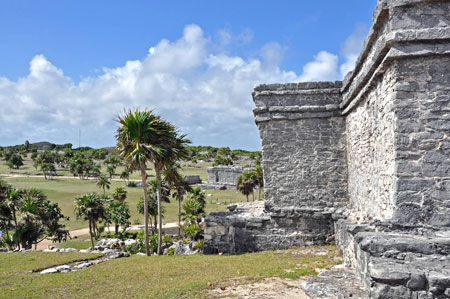By Michelle Werts

The Americas have been home to many storied cultures, like the Incans of modern-day Peru and the Aztecs of modern-day Mexico. But pre-dating both of these were the Mayans, who ruled Mesoamerica — the region from central Mexico to Central America — for centuries and centuries and who are renowned for their art and architecture, astronomy, mathematics and more. Archeologists have traced the Mayan culture back to 1,800 B.C., but the civilization’s glory period would only be from 250-900 A.D. — when all of sudden the culture’s reign ended. Unlike the demise of the Incans and Aztecs that can be attributed to European conquerors, archeologists only have theories about what happened to the Mayans. In recent years, though, more and more researchers are theorizing that the climate, specifically in the form of a series of droughts, may have played a big part in this great culture’s demise — and that the Mayans themselves may have contributed to the climate change that would be their undoing.
In a new paper in Geophysical Research Letters, researchers posit that deforestation for agricultural purposes during the Mayan reign contributed to increased drought levels, which may have been a major factor in the civilization’s decline. Based on their research, the paper’s authors estimate that precipitation during this period decreased by five to 15 percent compared to what rainfall would have been with natural forest cover. Their models also suggest that up to 60 percent of this decline in rainfall is attributable to deforestation.

How does deforestation for agriculture increase drought? Dark, dense vegetation — like Central America’s rainforests — absorb lots of light and energy from the sun, which aids transpiration (the evaporation of water from plants and trees). Sunlight helps the pores on leaves, called stomata, open, allowing more water to evaporate. Many crop plants, like corn, absorb less light and energy, reflecting more of it back into the atmosphere and decreasing conditions favorable for rain. So, as the Mayans cut down forest to make room for their burgeoning population of more than 19 million people — and to grow food to feed those 19 million people and build magnificent, lime-plaster-based cities — a drought-prone region of the world became even drier.
The tale of the Mayans holds much resonance today: a prosperous, technology-advanced society, struggling to keep up alters its environment to help solve its problems. Except, as it turns out, altering that environment may have actually caused more problems. So maybe we should all take the Mayans as a sober, cautioning tale — and remember to look to our forests as helps rather than hindrances.